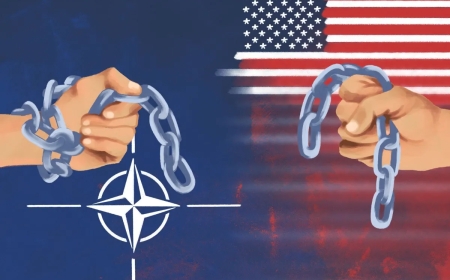Myanmar's Civil War Intensifies, Bringing Devastating Attacks on Schools
The civil war in Myanmar has seen a significant rise in attacks on schools, exacerbating the country's already fragile education system and impacting millions of children, according to a recent report by Myanmar Witness.

The civil war in Myanmar has seen a significant rise in attacks on schools, exacerbating the country's already fragile education system and impacting millions of children, according to a recent report by Myanmar Witness.
The UK-based Center for Information Resilience's project, Myanmar Witness, documented 174 attacks on educational institutions since the military coup overthrew the elected government of Aung San Suu Kyi three years ago. These findings are based on evidence from social media and news reports. Other organizations, such as the Global Coalition to Protect Education from Attack, report even higher numbers, with over 245 incidents of school attacks and 190 instances of military use of educational facilities in 2022-2023.
Following the 2021 coup, Myanmar experienced widespread nonviolent protests advocating for democracy, which were met with lethal force from the military. As a result, many protesters turned to armed resistance, plunging large areas of the country into conflict. Current estimates suggest the military controls less than half of Myanmar.
"Education underpinned the democratic movement in Myanmar, but today Myanmar’s youth are witnessing their schools—and life opportunities—reduced to rubble," said Matt Lawrence, project director at Myanmar Witness. "If education is not protected throughout Myanmar, the next generation’s view of the world risks being driven by factionalism and war, rather than hope and reason."
The disruption to education is profound. Save the Children reports that student enrollment in Myanmar dropped by 80% from the onset of the COVID-19 pandemic in 2020 through 2022. By mid-2022, approximately 7.8 million children, or half of the country's youth, were not attending school.
In addition to the physical destruction, the conflict has caused significant casualties. Myanmar Witness reported 64 fatalities and 106 injuries related to the 176 school attacks, although most could not be verified. The shadow National Unity Government estimated in January that over 570 children under 18 have been killed by security forces. The Armed Conflict Location & Event Data Project estimates that upwards of 8,000 civilians have died in the conflict.
Airstrikes by the Myanmar military are primarily blamed for the school attacks, as they increasingly rely on aerial assaults due to losing ground control to pro-democracy and ethnic minority armed groups. Despite the military's denials of targeting civilians or using disproportionate force, the evidence points to widespread destruction. Resistance forces have also attacked schools, but these incidents are less frequent and typically involve drones with small explosive loads.
The conflict has forced many teachers to abandon their posts, joining a civil disobedience movement against military rule. This has led to the emergence of alternative educational systems, with schools outside military control becoming more prevalent. However, this dual system poses risks for students and educators, who face potential harassment, detention, or punishment at military checkpoints.
Lisa Chung Bender, executive director of the Global Coalition to Protect Education from Attack, highlighted the dire situation: "It puts children and educators in an impossible position where they have to go through checkpoints and say where they’re going, and if it’s determined that they’re going to an enemy school, whichever enemy that is, they can be harassed, detained, or physically punished."
The lack of access to education is only one aspect of Myanmar's worsening humanitarian crisis. Over 3 million people have been displaced due to the conflict, and the country is grappling with a severe economic downturn. The United Nations Children's Fund reported in June that 35% of Myanmar's children live in food poverty, meaning they lack access to sufficient nutrition for healthy growth. Additionally, the UN Development Program states that over half of Myanmar's children now live in poverty, as the country’s middle class has all but vanished.
The international community continues to monitor the situation closely, urging for protection of educational facilities and a resolution to the ongoing conflict to safeguard the future of Myanmar's children.













































